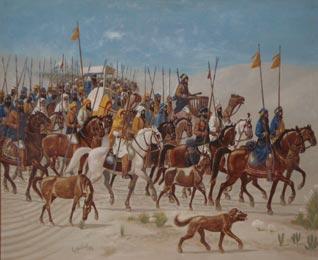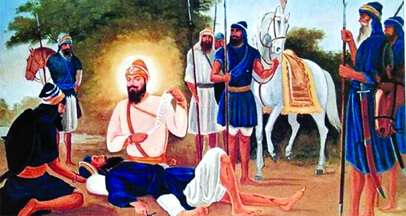Discover the heroic tale of the Saragarhi battle fought by 22 Sikh soldiers against overwhelming odds on 12 Sept 1897 in the Tirah region.
Discover the intrigue behind the 1847 Prema Plot, a conspiracy to overthrow British control in Punjab, spearheaded by Maharani Jind Kaur. Explore the untold story.
BUDDHA DAL and Taruna Dal, names now appropriated by two sections of the Nihang Sikhs, were the popular designations of the two divisions of Dal Khalsa, the confederated army of the Sikhs during the eighteenth century. With the execution of Banda Singh Bahadur in 1716, the Sikhs were deprived of a unified command. Moreover, losses suffered by the Sikhs during the anti Banda Singh campaign around Gurdaspur and the relentless persecution that followed at the hands of `Abd usSamad Khan, governor of Lahore, made it impossible for Sikhs to continue large scale combined operations.
Delve into the historical Sikh Jagirdari system, its evolution under Maharaja Ranjit Singh, and its impact on land revenue and governance.
Discover how the 1956 Regional Formula aimed to solve Punjab's language dilemma, leading to the state's division into Haryana and Punjab by 1966.
BOARD OF ADMINISTRATION, a set of triumvirs appointed by Lord Dalhousie, the British governor general to manage affairs in the Punjab after its annexation on 29 March 1849 to the dominions of the East India Company. The Board consisted of three members. Henry Lawrence, the British resident at Lahore, was named president and entrusted with matters connected with defence and relations with the sardars while his brother, John Lawrence, was put in charge of land settlement. Charles Grenville Mansel, a covenanted civilian, was entrusted with the administration of justice.
Discover Victor Jacquemont's detailed 1829-1832 Indian travels exploring botany, culture, and meeting Maharaja Ranjit Singh. A historical adventure awaits!
Discover the rich history and significance of 'Sardar,' an honorific title symbolizing leadership and valor among Sikhs and in the military.
CHALI MUKTE, lit. forty (chalf) liberated ones (mukte), is how a band of 40 brave Sikhs who laid down their lives fighting near the dhab or lake of Khidrana, also called Isharsar, on 29 December 1705 against a Mughal force in chase of Guru Gobind Singh are remembered in Sikh history and daily in the Sikh ardas or supplicatory prayer offered individually or at gatherings at the end of all religious services. Guru Gobind Singh, who had watched the battle from a nearby mound praised the martyrs` valour and blessed them as Chali Mukte, the Forty Immortals. After them Khidrana became Muktsar the Pool of Liberation.
Discover the historical significance of 'jatha' in Sikh tradition, representing volunteer bands skilled in guerrilla warfare during 18th-century conflicts.







